The Indian football club structure showcases remarkable diversity, ranging from clubs with a refugee identity to those rooted in religious or sect affiliations. Additionally, there are clubs emerging from regions typically overlooked in mainstream Indian media and politics. Football’s influence is truly powerful, advocating for inclusivity with the motto of “Football for all.”
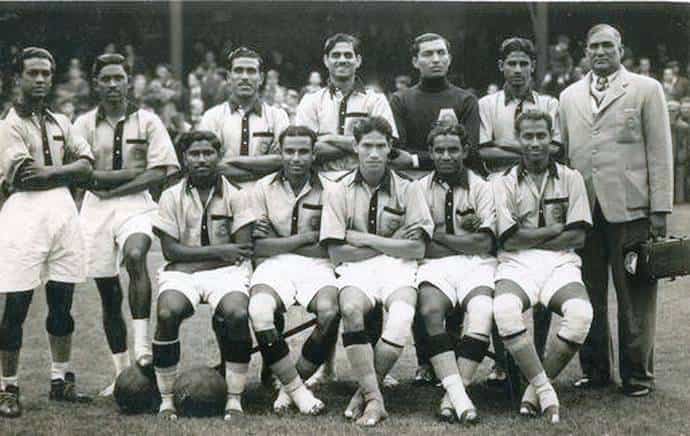
History of Indian Football Club
Football was introduced to India by British soldiers in the mid-nineteenth century, with initial games played among army teams. The establishment of football clubs across the country followed this, and in 1872, Calcutta FC became the first football club. Other early clubs, such as Dalhousie AC, Traders Club, and Naval Volunteers Club, soon emerged. Calcutta, the capital of British India, became a central hub for football, hosting tournaments like the Gladstone Cup, Trades Cup, and Cooch Behar Cup in the late nineteenth century. The Durand Cup and IFA Shield were also initiated during this period.
Sovabazar Club achieved early success by winning the Trades Cup in 1892. Mohun Bagan Athletic Club, established in 1889 in modern-day West Bengal, gained fame in 1911 as the first Indian team to win the IFA Shield, previously dominated by British teams. Their 2–1 victory over East Yorkshire Regiment in the final is often considered one of the greatest wins by an Indian team before independence.
The Indian Football Association (IFA) was founded in Calcutta in 1893, initially lacking Indian representation on its board until the 1930s. The All India Football Federation (AIFF), the national governing body, was established in 1937 but only became affiliated with FIFA at least a decade later. Notably, India insisted on playing barefoot, setting them apart from other national sides. Jyotish Chandra Guha gained global attention for Indian football in 1930 when he became the first Indian to play for the English Football League club Arsenal.
East Bengal FC
East Bengal holds a prominent position as one of the most widely supported football clubs in Asia, with a fan base primarily composed of the Bangals. The term “Bangals” refers to the immigrant population from the eastern region of Bengal in British India, who were compelled to leave their homes (modern-day Bangladesh) during the violent riots of the partition in 1947. For these individuals, East Bengal became not just a football club but a source of identity and hope.
The massive influx of the dispossessed into the state led to a socio-economic crisis, resulting in rivalries between the immigrant Bangals and the native population of West Bengal, commonly known as Ghoti. This rivalry extended beyond football, permeating various aspects of life, from jobs to schools and, notably, football pitches. The intense competition with cross-town rival Mohun Bagan, now known as ‘Mohun Bagan Super Giant,’ epitomizes this divide, culminating in the famous Kolkata derby, recognized as Asia’s biggest football rivalry.
East Bengal also shares a local rivalry with another Kolkata club, Mohammedan. The club is easily identifiable by its iconic red and golden yellow colors, earning it the nickname “Red and Gold Brigade” and “Laal Holud.” The passionate fans of the club are collectively known as the Torchbearers. In times of adversity, such as the mass displacement during the partition and atrocities by the Pakistan Army, sports and football, in particular, provided a platform for individuals to find their voice and pride in a new land.
Namdhari FC
The Namdharis, a proud Sikh sect existing outside the mainstream Sikhism, migrated to India during the partition to escape religious violence. Initially making their mark in hockey, they later expanded their presence to football, exemplifying a resilient sub-cultural group carving out a name for themselves through sports.
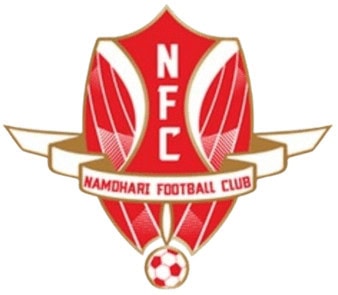
The Namdhari XI, their football team, was initially formed in 1975. Recognizing the importance of sports development, the Namdharis took a significant step in 2004 with the establishment of the Namdhari Sports Academy in Sri Bhaini Sahib, near Ludhiana. This initiative aimed to foster athletic talent and promote physical well-being within the community.
With a growing interest in football, the Namdharis further solidified their commitment to the sport by inaugurating their first football academy in 2018.
Inter Kashi
In May 2023, the All India Football Federation, the governing body of football in India, made an announcement that they would entertain bids for new clubs to join the 2023–24 I-League season. Subsequently, on 29 June 2023, it was revealed that an agreement for the Varanasi franchise had been successfully reached, with the collaboration of the Kolkata-based RDB Group of Companies and European clubs Atlético Madrid and Inter Escaldes. It’s worth noting that FC Andorra, associated with Inter Escaldes, does not directly play a role in Inter Kashi; however, the “Inter” moniker was adopted due to the partnership with Inter Escaldes.

As part of their broader vision, the club unveiled plans for the creation of the Atlético de Bharat Academy. This academy aims to play a pivotal role in the development of grassroots football in the state, emphasizing the importance of nurturing young talent at the foundational level.
The establishment of Inter Kashi reflects a corporate initiative to foster the growth of football in Uttar Pradesh. Beyond the sporting dimension, the club has taken a unique approach by actively promoting Varanasi’s ancient temple architecture and Dharmic identity. This strategic use of community culture is seen as an essential element in capturing the interest and support of the people in North India through football. It not only aligns with the ethos of the region but also adds a distinctive and culturally rich dimension to the football narrative in Varanasi and its surrounding areas.
Mohammedan SC
Formed in February 1891, Mohammedan Sporting Club stands as one of the oldest active football clubs in the country. It wasn’t until more than three decades after its foundation that the club became affiliated with the Indian Football Association (IFA) to participate in the second division of the Calcutta Football League (CFL), ultimately securing promotion to the premier division of CFL in 1933.
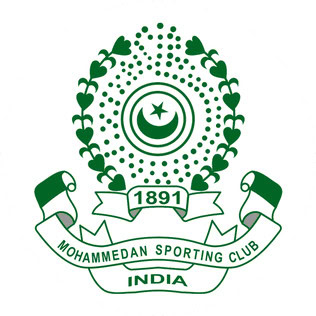
Founded during the early years of India’s independence movement, Mohammedan Sporting Club has been a symbol of progressive Muslim identity, enduring through the tumultuous period of rebellion and the subsequent struggle for status in a transformed post-partition landscape. This historical context has contributed to the club’s primary support from the Muslim population of Bengal. In its early days, Mohammedan played a pivotal role in spreading the sport to a substantial population in Kolkata, providing significant backing to the Muslim community in the city.
The club’s existence has also been marked by communal rivalries with cross-town competitors East Bengal and Mohun Bagan, both primarily supported by the Hindu population of Bengal during the initial decades. However, over time, these rivalries have evolved, becoming non-communal and mostly insignificant due to the infrequency of encounters in major tournaments. Despite the historical communal underpinnings, the focus has shifted more towards the sporting aspects, reflecting the changing dynamics and inclusive spirit in contemporary football.
RKM FC and New Friends Club
The RKM Football Academy, an Indian professional football club and academy located in Narainpur, Chhattisgarh, holds the distinction of being the first football club from the state to participate in the U17 Youth Cup and the I-League 2.
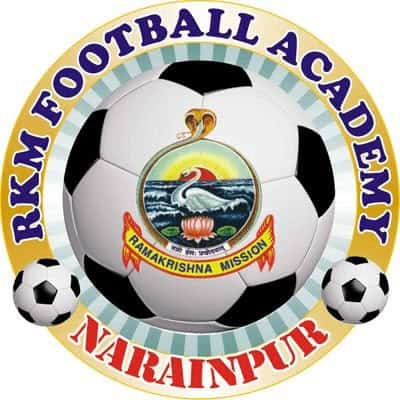
Originating from Bastar and Dantewada, RKM FC and New Friends Club exemplify how sports, particularly football, can bring about transformative changes in lives. In the backdrop of rampant Naxalism and violence, the youth in rural Chhattisgarh are embracing football as a means to foster personal growth and positive transformation.
In terms of their history, RKM Football Academy achieved a significant milestone by becoming the champion of the inaugural season of the Chattisgarh State Men’s Club Championship. This triumph earned them qualification for the 2022–23 I-League 2. Impressively, they retained their title as champions in the following year, 2023, once again winning the Chattisgarh State Men’s Club Championship and securing a spot in the inaugural season of I-League 3.
Garhwal FC
Garhwal Heroes FC has a rich history, initially established by Kesar Singh Negi to provide a platform for young players from the Garhwali community in Delhi. The club gained popularity and was officially registered with Football Delhi (formerly Delhi Soccer Association) in 1953. Over the years, GHFC has been a consistent participant in the league championship organized by Football Delhi.
A significant highlight in the club’s history occurred in 1986 when GHFC emerged as the champions of the FD Senior Division, marking a historic triumph. However, financial challenges in the subsequent fifteen years led to the club’s relegation to the A Division and then the B Division of the Delhi League.
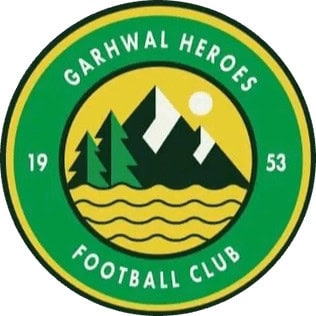
In 2001, a fresh chapter began for GHFC when B. S. Negi and M. S. Patwal took over the club. Under their leadership, the club started its resurgence, climbing from the B Division to the A Division and ultimately reaching the Senior Division in 2005. Backed by robust community support, GHFC consistently delivered strong performances, culminating in a triumphant return to glory by winning the FD Senior Division League in 2012–13.
With ambitions to raise their competitive standards, GHFC aimed to participate in the I-League 2nd Division from the 2013–2014 season onward. The club, deeply rooted in community and youth development, forged a historic partnership in 2013 with Bhaichung Bhutia Football Schools – a prominent football youth development setup in India and Delhi-NCR, signaling a commitment to furthering the growth of football at the grassroots level.
Aizawl FC
Aizawl FC, founded in 1984 in Aizawl, the capital of Mizoram, has a rich history and has participated in various amateur tournaments since its inception. Affiliated with the Mizoram Football Association (MFA) and owned by Robert Romawia Royte, the club underwent a significant transformation in January 2012 when officially certified by the All India Football Federation (AIFF) to participate in the I-League 2nd Division, marking their entry into professional football.
Under the management of Jahar Das in 2016, Aizawl FC reached the final of the Federation Cup, a notable achievement. The team participated in the 2012 Indian Federation Cup qualifiers and qualified for the I-League 2nd Division in their second attempt. In 2015, Aizawl clinched victory in the I-League 2nd Division, earning the opportunity to participate in the top-tier I-League during the 2015–16 season, a historic moment as the first team from Mizoram to do so. Jahar Das continued to guide the team, achieving a runners-up position at the 2015–16 Indian Federation Cup.
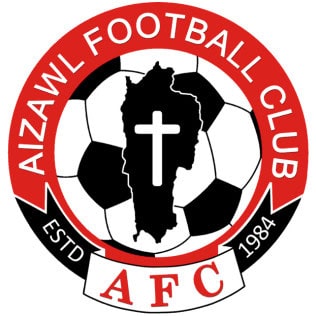
The pivotal moment for Aizawl FC came in the 2016–17 I-League season when Khalid Jamil took over as the head coach. Under his leadership, Aizawl FC secured a historic victory, winning the 2016–17 I-League and topping the league table with 37 points from 18 games.
Beyond their on-field success, Aizawl FC has contributed significantly to the fan culture in Indian football, particularly from Mizoram. The unique club chanting culture, influenced by Christmas carols and characterized by strong Church influence, has set Aizawl FC apart and brought a distinct flavor to mainstream Indian football.
Real Kashmir FC
Real Kashmir FC has a unique origin story, rooted in the aftermath of the devastating floods that swept through the region in 2014, causing significant loss of life and property. In response to the catastrophe, Shamim Mehraj, the editor of the local newspaper “Kashmir Monitor,” and Sandeep Chattoo, a local businessman, joined forces to provide an avenue for the youth, who had suffered immense losses during the floods, to stay engaged. The initiative began as a community outreach program centered around football.
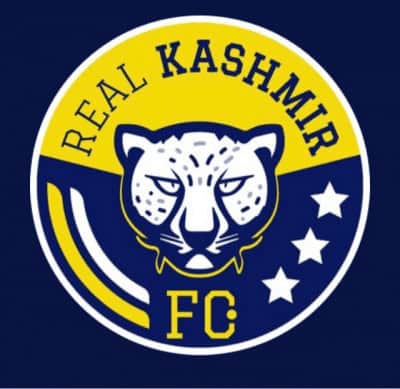
What started as a means of healing and engagement quickly gained substantial support from the local community, evolving into something more profound. Real Kashmir FC was officially established in 2016 and became affiliated with the Jammu & Kashmir Football Association (JKFA) under the dedicated efforts of Sandeep Chattoo, who is currently the owner of the club. This marked a significant milestone as Real Kashmir FC emerged as the first-ever top-flight professional football club in Jammu and Kashmir.
Beyond its sporting achievements, Real Kashmir FC has had a transformative impact on the region. In a region historically marked by significant military and political challenges, the club has played a pivotal role in changing the landscape through sport. With strong government backing, the youth, who might have otherwise been caught up in conflict, have turned away from violence and are now rallying behind the club. Real Kashmir FC has become a symbol of unity and a catalyst for peace, showcasing the powerful role that sports can play in fostering positive change and community cohesion.
Shillong Lajong and Rangdajied United
The roots of Shillong Lajong Football Club trace back to the finals of the Meghalaya Invitation Cup in 1982 when Shri Kitdor Syiem and Shri P. D. Sawyan, disheartened by the repeated failures of Shillong teams to reach the tournament’s final stages, decided to form a football club to reverse the trend. In 1983, along with a group of friends and supporters, they established a semi-professional club aptly named Lajong Football Club, which translates to ‘Our own’ or ‘Of the people.’ The club was also known as the Lajong Sports Social and Cultural Club.
Lajong FC made swift progress in the local football scene, starting with its participation in the 3rd Division of the Shillong Sports Association League in 1983, where it became the champion and earned promotion to the 2nd Division. Subsequently, in 1984, the club was promoted to the First Division. The turning point came in 1989 when Lajong FC clinched the Shillong Championship for the first time. In 1990, they secured the Meghalaya Invitation Cup, marking a significant milestone in their journey.
In 2009, Lajong FC made a pivotal move by joining the I-League 2nd Division, the second-highest national league in India at that time. Following a successful season, they earned promotion to the I-League, India’s top-flight football league. Despite facing challenges and relegation to the 2nd division at the end of their inaugural I-League season, Lajong FC had made its mark on the national football stage.
Rangdajied United has its origins dating back to 1987 when it was founded under the name Ar-Hima. Since its inception, the club has been an active participant in various editions of the Shillong Premier League. Notably, Rangdajied United has engaged in intense rivalries with other Shillong-based clubs, particularly Shillong Lajong and Royal Wahingdoh, contributing to the competitive and vibrant football culture in the region.
Royal Wahingdoh FC
Founded in 1946 as Wahingdoh Sports Club, the Shillong-based club enjoyed considerable success, securing numerous titles. However, with the changing landscape of football marked by professionalization, the amateur club faced challenges competing with younger and more professionally oriented counterparts, initiating a period of decline.
Royal Wahingdoh FC, one of Shillong’s two most popular clubs, witnessed a resurgence in the 2010 season when they lifted the Shillong Premier League in their debut season. The momentum continued in 2011 and 2012, with the club securing the league title under the guidance of head coach Carlton Chapman.
Despite finishing third in the top-tier domestic league, Royal Wahingdoh decided to pull out of the I-League, and Santosh Kashyap, the head coach at the time, left the club. Although the club was granted a national license to compete in the 2015–16 I-League, they opted to withdraw, citing a lack of a clear roadmap for the league as the primary reason.
For Wahingdoh, the decision was a difficult one. Operating on a budget of ₹6–7 crore in their only I-League season, they chose to redirect the funds toward building infrastructure and scouting for more talent. Rather than investing more in a league where they felt there was a lack of recognition and visibility, the club prioritized long-term sustainability and development.
These clubs, often seen as the cradle of Khasi and Garo pride, has not only represented the football aspirations of Meghalaya but has also played a crucial role in showcasing the sporting capability of the region. The mention of other Meghalaya-based football clubs like Rangdajied United and Royal Wahingdoh underlines the continued contribution of the state to Indian football.
NEROCA
Established in 1965, the North Eastern Re-Organising Cultural Association (NEROCA) was founded with the aim of enhancing the quality of cultural activities and sports in the Indian state of Manipur.
In the 9th season of the Manipur State League in 2014, NEROCA achieved significant success by winning the championship trophy. Following the norms set by the All India Football Federation (AIFF), the club underwent a name change to “NEROCA Football Club Imphal” with the goal of participating in the I-League 2nd Division.
NEROCA successfully competed in the 2015–16 and 2016–17 I-League 2nd Division seasons, with their most notable accomplishment being the championship title in the 2016–17 season, securing 26 points in 10 matches from the final round and earning qualification for the 2017–18 season of the I-League. Additionally, they clinched the Manipur State League title in 2016.
NEROCA’s most significant achievement to date is emerging as the runners-up in the 2017–18 I-League. Under the coaching of Gift Raikhan, the club concluded the campaign with an impressive 32 points from 18 matches, marking a remarkable feat in Indian football.
TRAU
Competing in the I-League, the second tier of the Indian football league system, Tiddim Road Athletic Union (TRAU) is nicknamed “The Red Pythons” and was established in 1954.
TRAU made its debut in the I-League 2nd Division during the 2017–18 season. Their noteworthy achievement came in 2019 when they secured promotion to the I-League after winning the 2nd Division. In addition to their participation in the I-League, the club is also actively involved in the Manipur State League.
Founded on October 2, 1954, in Kwakeithel, Imphal, TRAU has been a pioneering organization in the realm of sports activities. The club boasts an impressive record in the Manipur State League, clinching the CC Meet state league title six times and finishing as runners-up on nine occasions. This rich history underscores TRAU’s longstanding contribution to football in Manipur and its successful journey to the national stage.
KLASA

KLASA is a professional football club based in Keinou, Bishnupur, in the Indian state of Manipur. The history of KLASA dates back to its establishment as the Keinou Library and Sports Association in 1972. Initially focused on the development of the library and sports in Keinou and the surrounding areas, KLASA FC emerged as a prominent entity. Chanambam Prakash Singh, a player from the Indian Air Force, played a crucial role in the club’s early development. Under his guidance, training sessions were conducted at Keinou Kangjeibung, and KLASA achieved district champion status in consecutive years from 1976 to 1978. The club also secured victories in various inter-district tournaments, contributing to its growing popularity each year.
While diversity in Manipur has led to tribal conflicts, the state’s unparalleled contribution to Indian football remains a source of pride for the country. Despite the challenges, three clubs persistently battle against the odds.




